
Got Rotting Roots? Pythium: An In-depth Analysis
Brown, sludgy, rotting roots… not a pretty picture, huh? Well when Pythium takes hold of your plants, this is exactly what you can expect to uncover! As one of the most common causes of seed rot, damping-off and rotting roots in hydroponics, the disease has devastating capabilities in wet soil. But how much do you really know about the roots of plants and how they can be affected by diseases like Pythium?
The arrival of summer inevitably sends temperatures soaring over the 25oC mark, which not only makes it difficult to control the indoor grow room environment but also causes issues with regards to the heating up of hydroponic nutrient solutions. Under these circumstances the feed mixture ends up containing less available dissolved oxygen, meaning your plants are much more prone to the notorious rotting roots caused by species of plant pathogenic genus pythium. Over the course of the following article we aim to reveal how pythium grows and develops, and how best to prevent and treat this invasive pathogen, eliminating rotting roots.
What Is Pythium? A Fungi?
Pythium was misclassified for over 150 years as fungus! It is not actually one at all, and instead belongs in the family Pythiaceae of the class Oomycete. These are fungal-like organisms that grow mycelium made of cellulose and produce spores called oospores and zoospores.
Pythium is one of most the common causes of seed rot, damping-off and root rot in hydroponics. There are many species within the genus Pythium that can produce root rots, all of which have slightly different growth habits, characteristics and environmental requirements for growth.

In the same oomycetes class as pythium you’ll also find phytophthora, which leads to very similar symptoms of rotting roots but at the same time can also attack above-the-ground plant material causing blight, fruit rots and stem rots. Fear not though, the root rot symptoms of pythium and late blight (Phytophthora infestans) are very similar and so are the preventative measures and treatments for gardeners.
Where Does Pythium Come From?

Just like humans are prone to catching a cold, cough or flu bug that may be floating around, plants also find themselves susceptible to diseases in the same way. Common in nature, these plant diseases can be brought into a grow room through airborne dust, in soil or plant fragments on clothes and shoes, on infected plants from other growers, on old equipment and even in the water used to make up hydroponic nutrient solutions. Evidently then pythium is a fairly common problem, but fortunately ways and means do exist to prevent its growth and survival. Gaining an understanding of how pythium attacks plants and reproduces represents the first major step in managing this potentially destructive disease…
Pythium - Growth and Development
When a pythium infection occurs it attacks roots by producing rapidly growing mycelia that grow inside the plant (intracellular) and in the growing media immediately around the roots.
The mycelia outside the root produce tiny balloon-like organs called sporangia and in these over 100 ‘zoospores’ can be produced. Zoospores are not passively distributed like fungal spores – instead they are actually mobile in the nutrient solution using two tails called flagella to swim through it!
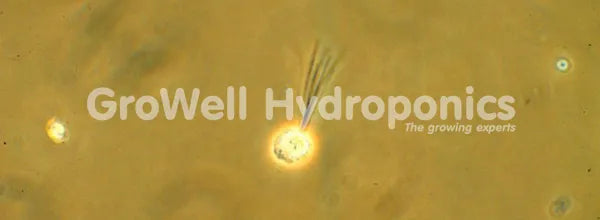
The zoospores travel to a portion of uninfected root, where a metamorphosis takes place known as encystment, during which time the cell walls are thickened and a germ tube is produced to penetrate the root.

The mobile zoospore stage of the growth and development of Pythium have given them the common name ‘water moulds’. Although these zoospores are efficient swimmers, and are the principle way in which pythium spreads though a hydroponic system so quickly, they are not very persistent outside of their water based habitat.
However, pythium can also produce ‘oospores’ from its mycelium, which are more persistent and are able to survive outside of ideal conditions for their germination. Oospores spread via wind or water, and like fungal spores prove to be very persistent and difficult to eradicate.
When either an oospore or zoospore initiates an infection, the spore germ tube directly enters the plant tissue. The mycelium of the growing pythium outside of the root tissue can also enter the roots to spread its infection before spore development. Once the mycelia are inside the root tissue, the pythium produces enzymes that break down the pectins holding the cells together. This is why infected roots lose their integrity and go mushy.
Generally, if pythium infects a newly germinated seedling or rooted cutting, then the plant will often die at a young age. If infection occurs on a well-developed plant the advance of the infection can be stopped at that point thanks to its own immune responses keeping the infection localised.
This results in the decay of some – but not all – root material. However, as zoospores are produced and released into the nutrient solution at a rapid rate, more roots are infected. If the cycle of zoospore production and infection is not stopped, then the disease can decimate the whole root system very quickly.
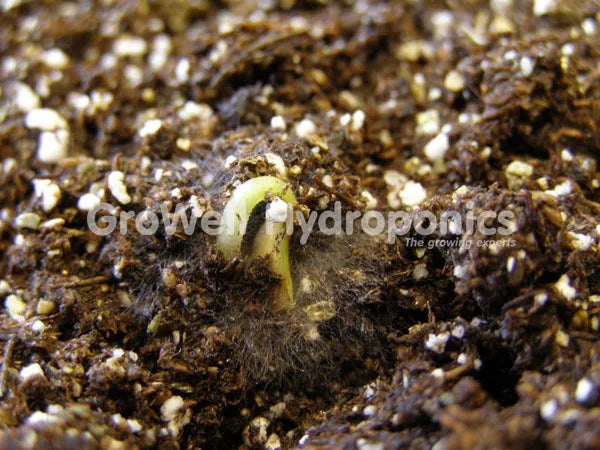
Pythium – Rot Symptoms from Smell to Foliage
The first sign of pythium taking hold of the roots is a discolouration from white to beige/yellow/brown colour, followed by the gradual shift to the soft and mushy texture of rotting roots. In an early infection, you can often tug at a root you suspect of having the infection, and the outer root sheath will come off leaving the central core. Plants spotted with these early infections are capable of recovery if the right approach is adopted. However, it is important to note that other fungi, such as Rhizoctonia, Fusarium, and Phoma, can also cause rotting roots and display similar symptoms of root rot, making it crucial to maintain healthy roots for optimal plant health.
If you haven’t had the opportunity to check your root system, or you are growing in a system that uses growing media and root inspections prove difficult to carry out, then you may find the first indication of an outbreak will be a rotten egg-like, sulphurous smell coming from the nutrient solution. This is often associated with a drop in solution pH, at which point plants can still recover if you take immediate action.
In a situation where there are no initial clear symptoms of pythium, you may find that the stunting of plant growth and unexplained wilting are the first indicators of a problem, typically followed by the yellowing of the leaves, also known as yellow leaves, and leaf drop. Already well into the disease, the plant is unlikely to survive.
For young plants such as cuttings and seedlings, pythium often causes the stem to rot at the base, so there’s nothing to stop them from falling over and dying. Indeed, the stems of most plants that have constant contact with damp growing media can be at risk of stem rot, with pythium being the main culprit. Where possible then, you want to ensure the stem does not remain in damp growing media over any prolonged period of time. Additionally, rotting roots caused by harmful fungi can also lead to wilting and yellowing of leaves, stunted growth, and eventual death of the plant.
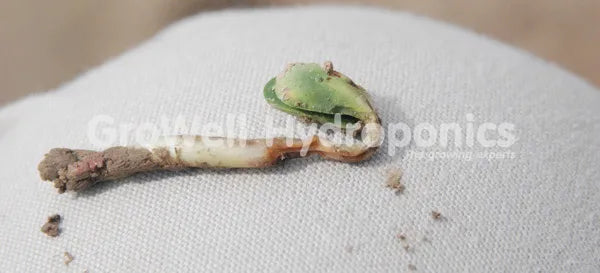
Pythium - Causes of Root Rot. Waterlogging (overwatering), temperature & nitrogen.
Although pythium is fairly common, many growers manage to avoid it all together. How? Well, pythium acts in an opportunistic manner, and given the right conditions it will simply flourish. But when presented with less than ideal conditions and healthy robust plants, pythium will find it very difficult to make successful infections.
High temperature
As mentioned at the start of the article, high root zone or nutrient solution temperatures will support the growth and development of pythium and rotting roots. The high temperature causes low levels of dissolved oxygen in the nutrient solution, leading to poor root growth and function, increasing the risk of infection. Over-watering plants in soil or coco also produces a saturated root zone that is lacking in oxygen, and these anaerobic conditions make it very difficult for roots to thrive and very easy for pythium to spread, making it a common cause of root rot.
Water-logging (in hand watering)
Make sure your growing medium has good drainage and is only watered as and when it’s needed, with a depth of at least a couple of inches.
Infection and insects
Root damage is a major cause of infection. Pythium is opportunistic and will favour entry through a damaged area, which often affects young plants during transplanting. Insects feeding on the root system, such as fungus gnats, are also capable of creating many wounds in which pythium spores can easily infect the plant.
Excess nitrogen
Excess nitrogen is a contributor to the onset of infection by pythium. Nitrogen is needed by plants in relatively large amounts, but too much can generate soft weak growth that happens to be more prone to rotting roots. Avoid over-supply of high nitrogen ‘grow’ base nutrients or try and use additives such as SHOGUN CalMag in high doses.
Poor hygiene
Poor grow room hygiene and failure to remove dead plant material from around plants are sure fire ways to invite trouble into your grow room. You should immediately clean up any dead leaves and pick out any floating root fragments that are still in the nutrient solution. Re-using growing media is fine when you have had successful previous crops but if you fear the possibility of an infection don’t risk it, replenish with new stock. Additionally, always make sure to use a plant container with sufficient drainage holes to prevent root rot.
Pythium – Prevent rotting roots through temperature and drainage
One of the best methods for preventing pythium and rotting roots from occurring in recirculating hydroponic systems is to maintain the optimum nutrient solution temperatures by insulating the reservoir and using a chiller. Most pythium species responsible for hydroponic crop damage are very active at a temperature range of 20-30C, so try and keep the solution at a cool 18-20oC.

Change your reservoir
Frequent reservoir changes for a recirculating hydroponic system is a simple yet effective way of ensuring the build-up of zoospores does not happen and the chance of rotting roots is eliminated. Ideally, you should aim to carry out weekly changes of your nutrient solution.
Keep clean and tidy
It sounds obvious, but you cannot underestimate the importance of keeping clean and tidy! For starters, all dead and/or decaying plant material must be moved far away from the growing area. Sterilising, or at the very least, cleaning hydroponic equipment between crops is a must - we recommend using RoomClean for the task. Additionally, incorporating compost into the soil or growing media can increase the amount of humus and the soil's or growing medias water storage capacity, helping to prevent issues with root rot caused by Pythium by ensuring proper drainage and moisture levels.
Maintain your environment!
Maintain a good growing environment! Stressed plants are more prone to disease than healthy plants so you’ll want to closely control the temperature and humidity to make the area as near to perfect as possible. Remember the growing environment is arguably the most important overall factor when you’re growing plants indoors, including the appropriate amount of water for each plant's specific needs and providing sufficient drainage to prevent excess water from accumulating around the roots when you're not in an active hydroponic system.
A great step towards complete prevention of pythium is to use beneficial biological products because these are not only easy to apply, but also extremely effective.
Pythium – Rot Prevention Products; Beneficials
Beneficial biological products are a completely natural and very low-maintenance means of preventing rotting roots. Using beneficial microbes in the growing media or nutrient solution not only makes the root system more robust, it also crowds out and antagonises pythium.
Mykos is a great product containing an aggressive species of Endo Mycorhizae that forms a powerful symbiotic relationship with the plants roots. Designed for application at the transplanting stage, Mykos will ensure the plant has increased access to water and nutrients as well as improving disease resistance in the root zone.
Note: it is currently not advised to add products containing Trichoderma at the same time as those with mycorrhizae due to competition between these two fungal species. You could inoculate with mycorrhizae and allow for good establishment to occur over 4-6 weeks, then inoculate with Trichoderma and not see too much inhibition or competition, but studies have shown that applying mycorrhizae and trichoderma simultaneously can lead to an inhibition of mycorrhizae establishment.

Improve general root health
Other products that are excellent at building good populations of beneficial biology to improve root growth, health and prevent disease include Ecothrive Charge.
The power of enzymes
Enzyme-based additives including Cannazym, Hygrozyme and House & Garden Multi Zyme are also useful for preventing pythium, by degrading dead root material to keep the root zone clean of dead and decaying tissues.
Pythium – Treatment Products; Sterilisers
In instances where a bad problem is found it is often good practice to sterilise the solution to kill all living microorganisms in the nutrient solution. This can be done effectively with Pythoff, which uses chlorine compounds at 1% to eradicate pathogens, but you will need to apply regularly as the chlorine compounds do dissipate over time. Using a sharp pair of scissors, remove all brown and mushy roots before sterilizing them with a solution of 1 part bleach to 3 parts water. This will help prevent the spread of fungal spores to other plants or soil. Using plenty of Pythoff for a few weeks, then following it up with Root Rot Stop is a good approach to getting on top of a problem.
Note: Pythoff will destroy all living microorganisms so obviously don’t add any beneficial biological products at the same time.
Liquid Oxygen (Hydrogen Peroxide) is a brilliant product for disease prevention, but at the concentrations necessary to kill active pythium growth and spores it will also damage plants. Great at a high dose for cleaning, Oxy-Plus is less effective when regularly added to the nutrient solution.
Ozone and UV treatment?
Ozone and UV treatment of the nutrient solution both kill pythium spores in the nutrient solution, but these prove to be no more than moderately effective overall. This is because they only work at the point of contact, so zoospores released within the root zone still have the opportunity to travel to other roots and cause infection (only the spores that travel past the UV steriliser or Ozone outlet are killed). Also these methods of sterilisation degrade the chelated nutrients in the solution, meaning you must use an additive to replace the degraded chelates. The better approach is to use a product that travels throughout the whole system to work against the pythium, such as Pythoff.
A Step-By-Step Guide To Dealing With A Previous Pythium Infection
If you have recently had an issue with pythium and are trying to get back on track, here is a list of recommended steps to prevent it from returning:
1.) Clean the hydroponics system using soapy water and a soft sponge, NOT an abrasive (when plastics are scratched with a scouring pad it leaves an ideal site for spores to hide).
2.) Replace any pipework that cannot be sufficiently cleaned.
3.) Follow-up with a high dose of a steriliser, e.g. Liquid Oxygen.
4.) Sterilise for 24 hours.
5.) Inoculate plants at an early stage with beneficial microbes to help with disease defence.
6.) Replant carefully and only when plants are very healthy and itching to go.
7.) If the above does not work and pythium comes back then consider all possible sources of infection and review your growing practices to stop it from taking any further hold. Changing the growing system(s) at this point is recommended.
Note: if you have to replace the growing system and pythium still returns then there must be another source of the disease, and the type of hydroponics system being used probably isn’t the most suitable for you – in which case, try a different one.
Please submit any questions you have about preventing or dealing with pythium to our team of growing experts, who are always available to help in store and online.


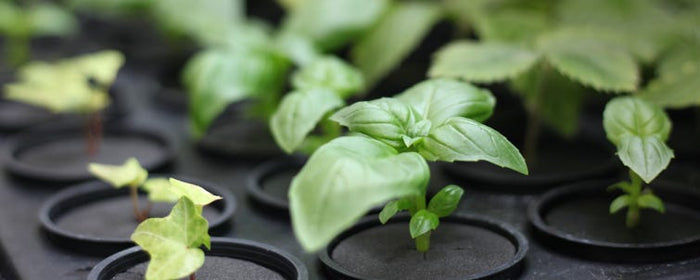
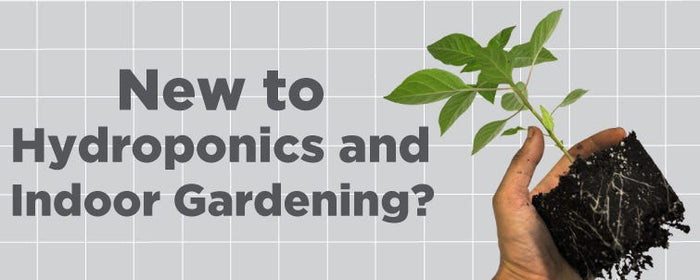

1 comment
Great article. I tried the peroxide (3%). I notice when I used it the plants were droopy for two days and then algae started growing in tbe